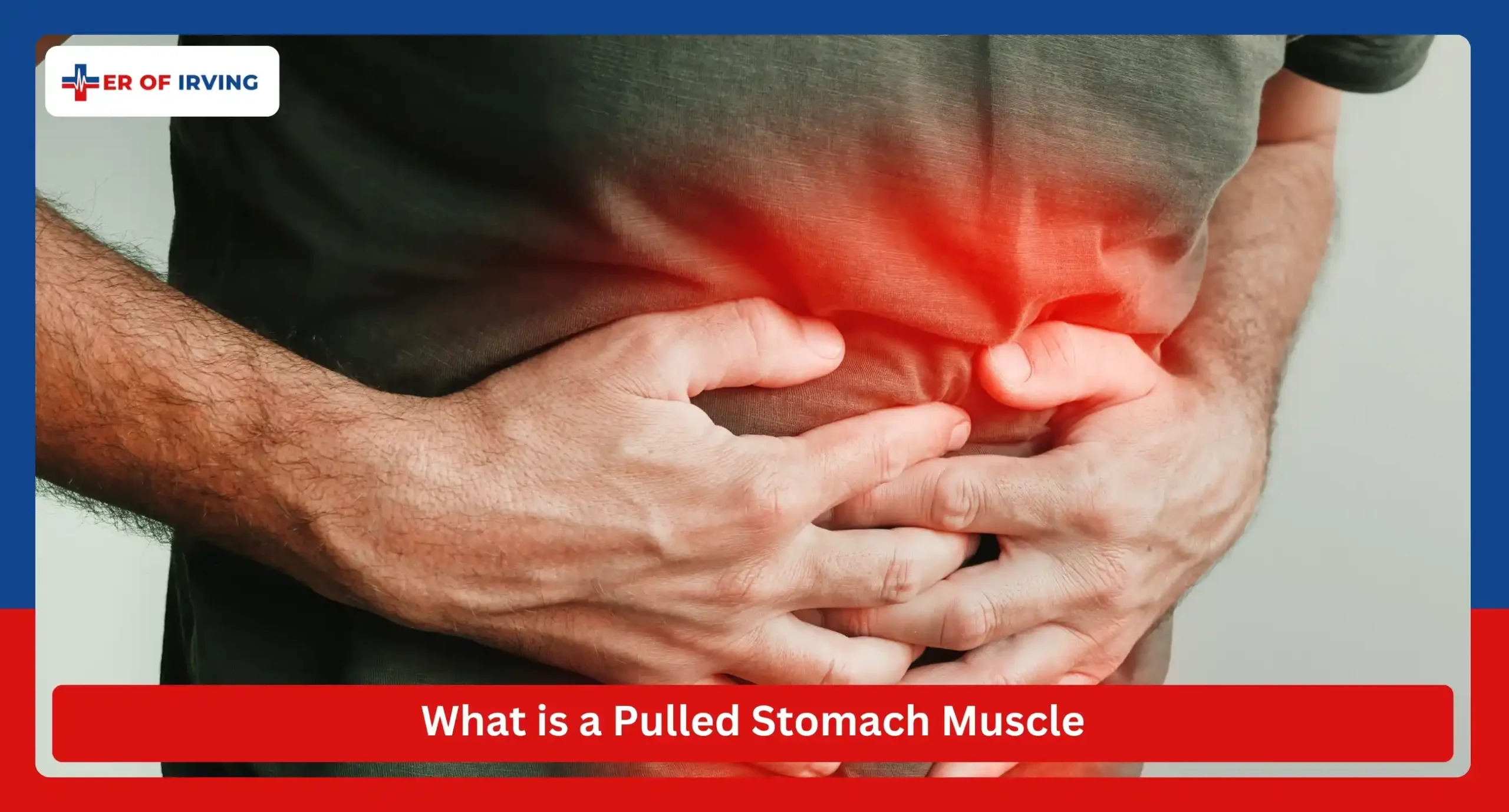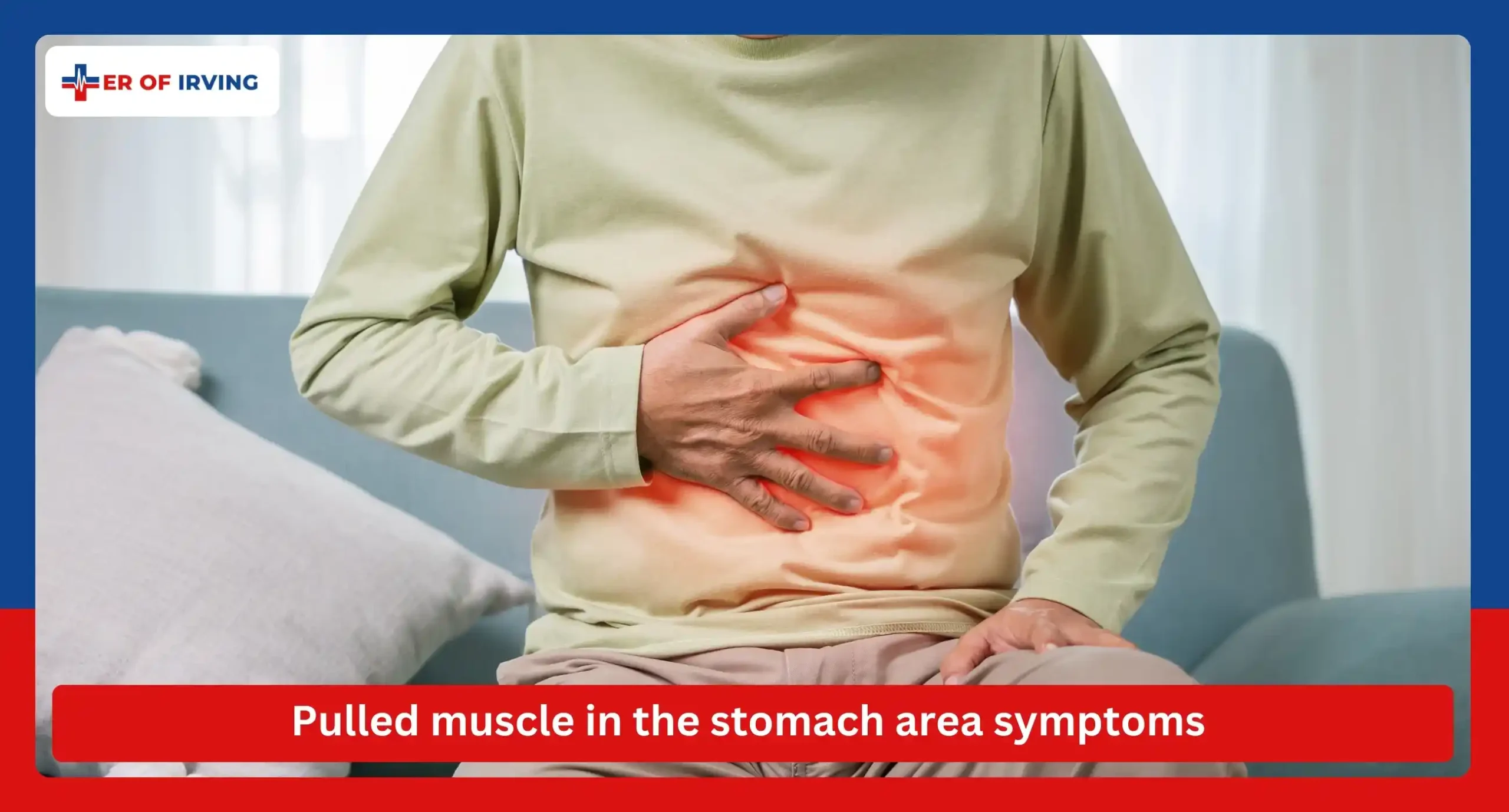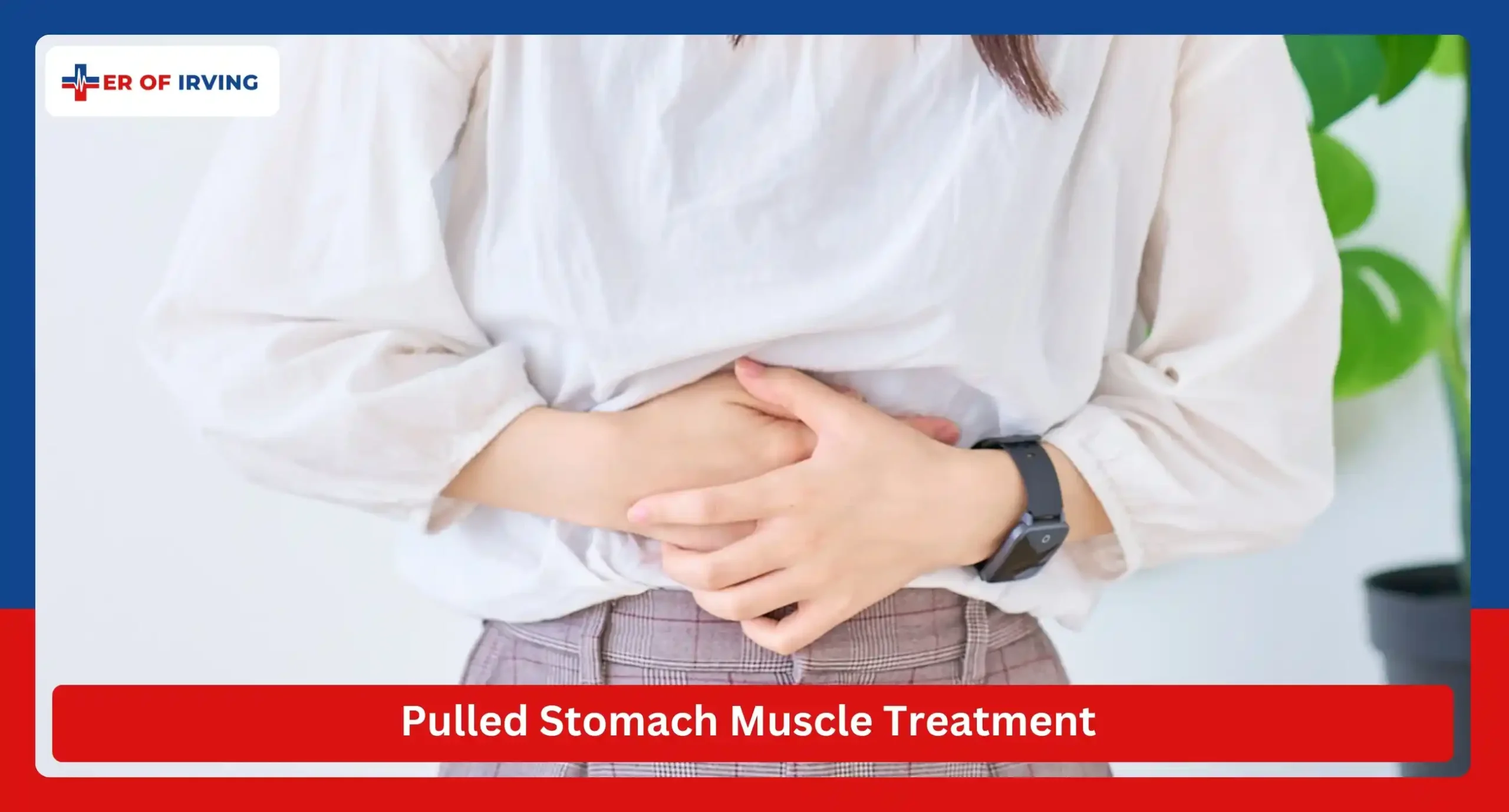Abdominal pain can cause intense discomfort and uneasiness. By knowing its root cause, the right treatment options can be adopted. A pulled stomach muscle, experienced due to overstretching or a tear in the abdominal muscle, also causes intense abdominal pain.
People often confuse this pain with liver pain or bladder-related issues. Whereas a pull in the stomach area has a different impact on the body and requires a different recovery plan. It is important to understand its signs and causes for speedy recovery.
In this blog, we will illustrate the early signs of a pulled stomach muscle and what the effective treatment options are.
What is a Pulled Stomach Muscle?

Pulled stomach muscle, also referred to as abdominal muscle strain, occurs when abdominal muscles get overstretched or torn. The abdomen is made up of different muscles, each responsible for different actions such as breathing, moving, and protecting organs. So when any of these muscles get pulled, you experience a pulled muscle in the stomach.
At times, people confuse liver pain location with bladder-related issues. This is because muscle pulling in the stomach caused digestive issues.
Levels of Abdominal Muscle Strain
A pulled stomach muscle is categorized into the following three levels:
- Mild Strain-Grade 1
- Moderate Strain-Grade 2
- Severe Strain-Grade 3
A mild discomfort in the stomach area should never be ignored, as it might be a sign of an underlying health issue. Immediately visit us at the ER of Irving, where our board-certified doctors are 24/7 ready to offer the best emergency service.
What does a torn stomach muscle feel like?
A torn stomach pain feels like an abnormal abdominal pain. It can go from mild to severe if it is not treated immediately. Mild pain can improve with proper rest, but various moderate and severe abdominal pain due to muscle aches requires immediate medical attention.
A torn stomach muscle usually feels like:
- Persistent and sharp aching pain
- Intense pain while coughing and sneezing
- Difficulty in moving
- Tenderness
- Continous discomfort
Pain in the abdominal muscle is linked to movement and muscle use, so when the pain gets intense despite having rest, it might arise other issues such as painful bladder syndrome and digestive problems.
Can you pull a muscle in your stomach?
Yes, just like all other muscles, you can also feel a pulled muscle in the stomach. This happens when you experience abdominal muscle strain as a result of overstretching or a tear in the muscles of the abdominal wall.
If the pain is mild, it heals easily within 2-3 days with proper rest, but if the pain is intense, then it might last up to a few weeks or until necessary emergency services are not taken.
This type of pain gets worse while coughing, sneezing, twisting, and bending. Females might experience this pain after a C-section due to weakness. If the pain lasts longer, it is important to get it checked, as it might be a sign of bladder-related issues or liver pain.
Pulled muscle in the stomach area symptoms

Pain experienced due to a pulled muscle in the stomach area differs from liver pain, bladder-related issues, and abdominal pain. It is important to understand the common signs of this pain so that you can focus on the right treatment plan.
Below are a few common symptoms of a pulled muscle in the stomach:
- Intense pain while coughing and sneezing
- Discomfort during movement
- Tenderness or swelling in the infected area
- A constant muscle-pulling sensation
Pulled stomach muscle female symptoms
Females experience pulled stomach muscles due to gynaecological conditions, as the abdominal wall, uterus, bladder, and pelvic floor play a crucial role during pregnancy. Consequently, females may experience a pull in the stomach muscle during such cases.
Below are a few common signs females feel due to muscle pulling in the stomach:
- Difficulty during lifting and bending
- Weak pelvic support
- Localized pain in the abdominal area
- Extreme pain while coughing and sneezing
Pulled stomach muscle right side vs left side
You might experience a pull in the stomach muscles on either the right side or the left side. Depending upon its location, this pain might mimic other serious health conditions such as abdominal pain, liver pain, and digestive issues. It is important to understand this condition so you can adopt the right treatment.
Pulled Stomach Muscle Right Side
At times, people have this question: “Why does my stomach hurt when I cough on the right side?” This occurs in many cases due to the pull of the stomach muscle. This pain worsens upon coughing, twisting, or heavy weight lifting.
Below are its key signs:
- Sharp and dull ache on the right side of the abdomen
- Improvement with heat and ice therapy
- stomach pain when coughing
- Tenderness and swelling in the outer area
Pulled Stomach Muscle Left Side
Pain in the left side occurred due to a pulled stomach muscle, which is mistaken for digestive issues and bladder-related problems. Pain on this side is normally triggered by heavy physical activity.
Below are its key signs:
- Extreme soreness when infected muscles are used
- Intense pain during physical activity
- Does not resemble liver pain
Pulled Stomach Muscle Treatment

By following the right treatment plan, you can recover faster from a pulled stomach muscle. The abdominal muscle strain healing time can take from a few days to a week if the right treatment plan is not adopted.
The table below illustrates details on different treatment plans to treat a pulled muscle in the stomach:
| Treatment Method |
Best For |
| Rest |
Mild cases that heal within a few days to a week |
| Ice/heat therapy |
Best for stiffness, as it relaxes tight muscles and improves blood flow |
| Medications |
Mild to moderate pain should be taken upon the doctor’s approval |
| Stretching and exercise |
It should be done when the worst pain fades away, as it helps in flexibility |
| Compression/support |
For moderate pain and post-pregnancy pain, it provides stability. |
Final Verdict on Pulled Stomach Muscle
A pulled stomach muscle causes discomfort, tenderness, and swelling. Due to its location, people often confuse it with bladder-related issues and abdominal pain. By knowing its location, early signs, and impact, you can focus on the right treatment plan.
The recovery method for a pulled stomach muscle is different from other types of pain. A painful bladder syndrome dietary modification can be treated with improvement in food intake, whereas a pain in the stomach muscle can be reduced with rest, support therapy, or medications.
If you or your loved one ever experiences a pulled stomach muscle and is in intense pain, then do not hesitate to visit us at the ER of Irving, immediately contact us to book an appointment now, or walk in any time.
Frequently Asked Questions (FAQs)
Is a pulled stomach muscle dangerous?
No, it is not dangerous if the pain is mild or moderate, but if the pain lasts for weeks and causes severe pain, then it can be alarming about a serious situation.
What to do if you feel an intense pulled stomach muscle?
It is best advised to visit a doctor and take the necessary medications.
What does a torn stomach muscle feel like?
It feels like a sharp, aching pain that swells or causes tenderness upon touching.
How to tell if the pain is in a muscle or the lung?
Pain in the muscle gets sharper and worsens upon movement, whereas pain in the lungs gets worse while breathing, accompanied by coughing.
